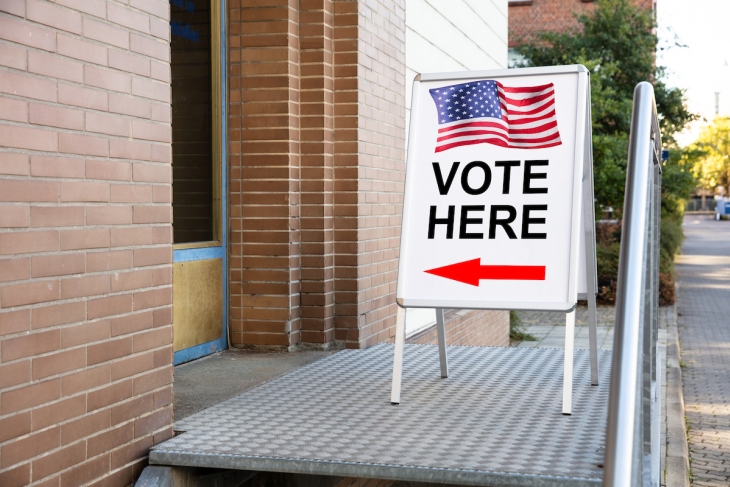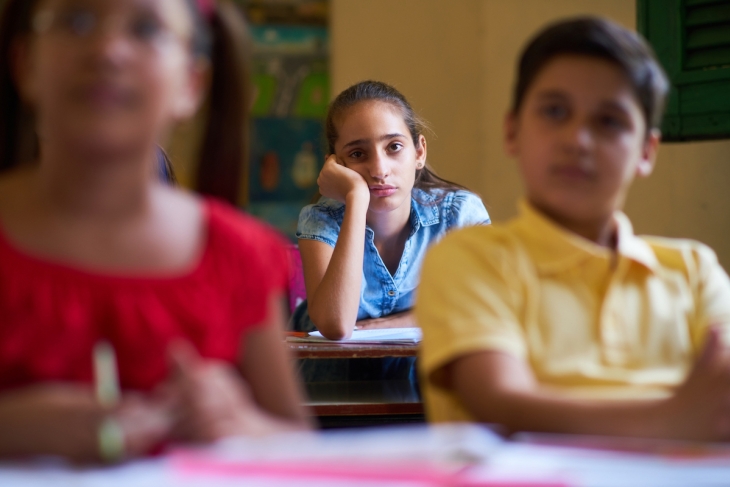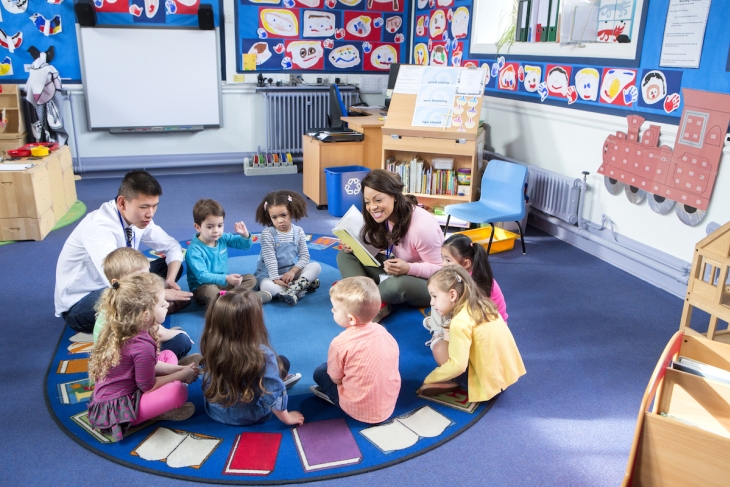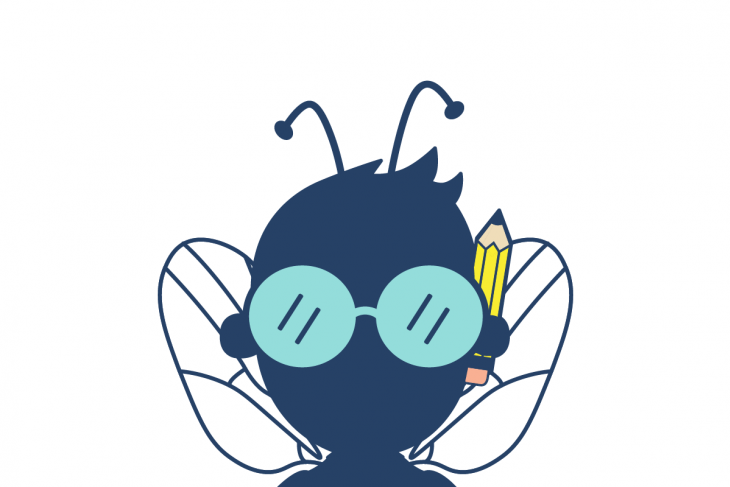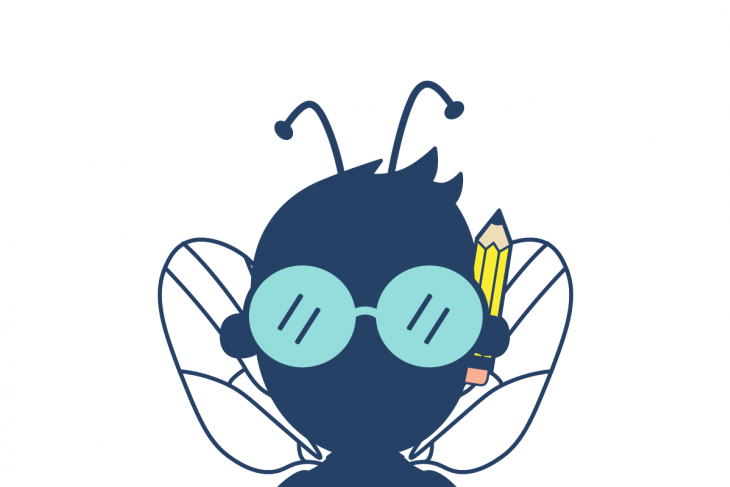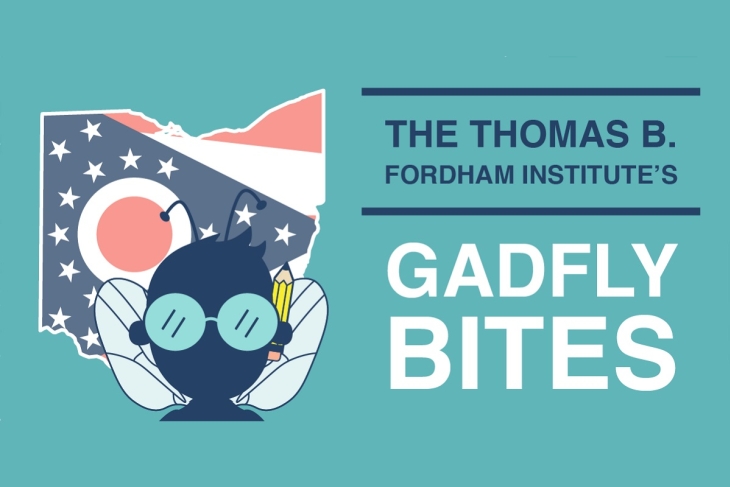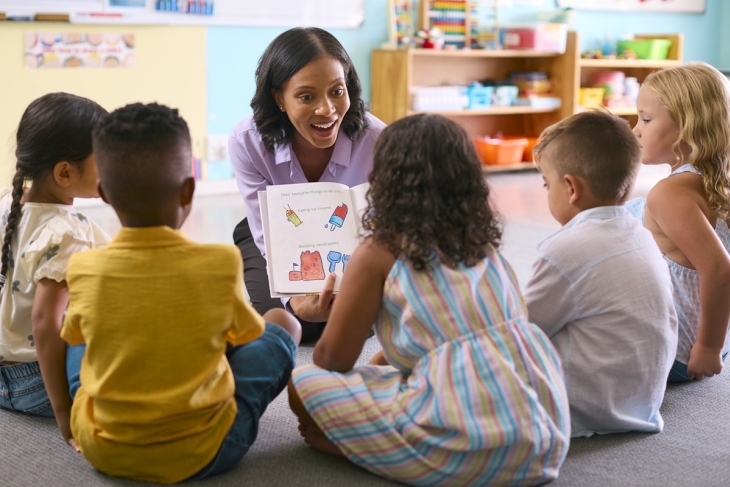America’s reckoning with racial injustice and the pursuit of equity have led some public school systems to reduce or terminate (or at least question) special programs for high achievers, such as “gifted” education, honors courses, and selective high schools. Historically, such programs have served disproportionately few Black, Hispanic, Native American, and low-income students. Their critics have used this fact to call for their overhaul or elimination—a position they often justify with claims that the programs don’t improve participants’ academic outcomes, especially those of marginalized students, and that more heterogeneous classrooms work just as well.
This policy brief challenges those claims. It argues that, rather than harming marginalized students of high ability, these programs are the best way to maximize their achievement. That’s because interventions, including acceleration and readiness grouping, benefit high-achieving students from every sort of background while doing minimal harm to lower- and middle-achieving peers; more heterogeneous classroom groupings, however beneficial for some students (when done well), rarely succeed at educating students across the wide range of achievement at all grade levels. This reality is especially concerning when more effective methods exist to identify and nurture the talents and abilities of students who are Black, Hispanic, low-income, and otherwise underserved.
Executive Summary
This policy brief considers four frequent arguments that opponents of advanced education programs use to advocate for their elimination.
Claim 1: Programs for advanced students don’t work, especially for marginalized students.
False. Interventions including acceleration and readiness grouping benefit high-achieving students from all backgrounds and don’t harm their lower- and middle-achieving peers.
Claim 2: What’s commonly termed “differentiated instruction,” i.e., grouping all readiness levels into single classrooms, works just as well as advanced programs that group some of them separately.
False. No high-quality research shows that heterogeneous differentiation can work at scale for the full range of student readiness levels that are typically present in American classrooms. And several large-scale meta-analyses say it doesn’t work.
Claim 3: School systems under-identify marginalized students due to biased practices.
Perhaps. We can’t deny that bias can take place, but the problem is deeper—and it is up to us to intervene early.
Claim 4: Many school systems have a gatekeeping mentality, which serves to worsen segregation and inequity.
True. And we must address it.
The Bottom Line
Education strategies designed for high-achieving students can improve their academic outcomes without harming their lower- and middle-achieving peers. Historically, marginalized students have been under-identified for participation in these programs. But eliminating such programs will not solve these inequities. Instead, implementing more effective methods of identification and developing and nurturing their capabilities over the course of their education, will allow more high-achieving marginalized students to access programs that benefit their achievement in ways that heterogeneous differentiation often cannot. In short, mend it, don’t end it, and extend it to many more students. This will create opportunities for them that they would not otherwise have, and will thereby also strengthen society’s prosperity, security, and cultural vibrancy.
Recommendations
1. Expand and augment school programs for higher achievers.
These services should include in-class differentiation, readiness grouping in separate classrooms, and acceleration. Instruction should make use of pre-differentiated, prescriptive curricula—wherein teachers follow units that have already been developed for them, meaning they don’t have to develop all of their daily lessons and there is less variance between teachers. For all of these strategies to boost identified students’ academic outcomes, school systems must also ensure they have sufficient capacity to serve all students who would benefit from these advanced education services. Implementing these steps will also better prepare more students to be eligible for these programs and ready to benefit from them when they participate.
2. Screen all students for advanced program eligibility using local norms.
Screening can be conducted with a universally administered assessment, as well as other measures like classroom grades. Compare students to peers who attend their school, as opposed to everyone in their district or state.[1]
3. States should mandate that districts offer fully developed advanced programs and regularly audit districts for compliance.
Mandates have the potential to improve the academic outcomes of high-achieving students, as well as diversify the population qualifying for these services. Those served would be more likely to receive many more years of increased academic rigor and enrichment, better preparing them to gain acceptance to, and excel in, selective high schools and colleges, where they’d earn degrees that make them competitive for respected and lucrative careers. In other words, these policies achieve the ends of diversifying opportunities for Black, Hispanic, low-income, and otherwise underserved children, but do so by building up their achievement instead of tearing down the unique and valuable services provided by high-quality advanced education programs.
—
Historically, marginalized students have been under-identified for participation in advanced education programs. But eliminating these offerings will not solve the problem. Instead, implementing more effective methods of identification, and developing and nurturing their capabilities over the course of their education, will allow more high-achieving marginalized students to access programs that benefit their achievement in ways that heterogeneous differentiation often cannot. In short, mend it, don’t end it, and extend it to many more students. This will create opportunities for them that they would not otherwise have, and will thereby also strengthen society’s prosperity, security, and cultural vibrancy.
Background
Every student needs and deserves educational experiences that help them reach their full potential. That means that some children require more than can be provided in a classroom geared toward the average student. Schools should therefore offer distinctive programs and services for advanced students who would benefit from them. These students come from every racial, ethnic, and socioeconomic background, so for American education to fail in this regard is to fail some of the country’s most marginalized children, as well as their communities and the country at large.
Yet the simplicity of this argument belies the complex challenges associated with such efforts in the real world. These challenges have only mounted in recent years, as an overdue reckoning with racial injustice has led to countless changes and reconsiderations in American life. In the realm of education, those changes include a wave of district-led equity initiatives, many of which took a skeptical view of programs for high achievers, including “gifted” education, honors courses, and selective high schools. Such programs have historically tended to serve a disproportionately low number of Black, Hispanic, and Native American students when compared with district-wide demographics. In some places—from Boston and New York City to Chicago and San Francisco—advocates called for, and got, their elimination or complete overhaul.[2]
The reasons are understandable. Specialized academic options for high achievers have historically been both excessively standardized—with little personalization for the students or communities they serve—and fundamentally exclusive—stemming largely from identification processes that have been biased toward White and affluent students. These academic programs have thus been vulnerable to charges that they are inequitable, such as Jeannie Oakes’s influential 1986 book, Keeping Track: How Schools Structure Inequality.[3]
Proponents have also erred by viewing qualifications for these programs—“ability” or “giftedness,” for example—to be inherent, something a student either has or doesn’t. In addition, they’ve based that determination on flawed entry requirements such as scores on tests that families have to opt their children into taking, and for which there are set cut-off scores and quotas, often district- or statewide. Limiting participation in that manner—related to the inexcusable fact that the capacity of such programs has been far too small—shrinks or eliminates opportunities for far too many children who would benefit from them. Such a regime also has the unfortunate effect of labeling (directly or indirectly) the vast majority of students as not gifted or not smart enough. Scant attention has been paid to unequal and uneven opportunities that many such children have to access the kind of academic preparation that would equip them to compete successfully for entry into these too-limited program offerings.
All of this has caused significant problems in the equity realm. Almost everywhere, such programs have been plagued by the under-enrollment and under-identification of students who are Black, Hispanic, low-income, and come from other underserved backgrounds. This has been documented for decades by other prominent figures in the field of education, such as Mary Frasier, Alexinia Baldwin, Donna Ford, and J. John Harris.[4]
It's important to note that there are a few opportunities for advanced students that even equity advocates aren’t calling to get rid of, such as Advanced Placement, International Baccalaureate, and dual enrollment. In fact, some equity-focused organizations, like The Education Trust, are pushing to expand access to those programs, which is notable.[5] But if we want to do so successfully, we need to start preparing kids—especially marginalized kids—to succeed in those courses by giving them the appropriate challenge and acceleration in elementary and middle school. Hence programs for high achievers.
None of these programs’ shortcomings is inevitable, and all can be corrected. When done well—and when their capacity is sufficient—they are an important and necessary service for students from marginalized backgrounds.
Claim 1: Programs for advanced students don’t work, especially for marginalized students.
False. Interventions including acceleration and readiness grouping benefit high-achieving students from all backgrounds and don’t harm their lower- and middle-achieving peers.
The benefit of programs for advanced students largely depends on design and implementation. Labeling a bunch of different programs advanced or gifted doesn’t mean their effects are the same. And indeed, they aren’t. Some work and some don’t. There is, namely, substantial evidence that program elements like acceleration, flexible readiness groupings, and pre-differentiated, prescriptive curricula have significant positive effects, including for participating marginalized students.[6] For less substantial programming, the evidence is lacking.
The research on the first two of those—acceleration and readiness grouping—is the most robust. Acceleration is “an academic intervention that moves students through an educational program at a rate faster or at an age that is younger than typical,” according to the Acceleration Institute at the Belin-Blank Center at the University of Iowa.[7] It comes in at least twenty forms, with the two most common being skipping entire grades and receiving higher-level instruction in a single subject, such as honors courses in middle or high school, Advanced Placement, International Baccalaureate, and dual enrollment.[8] It is “one of the most-studied intervention strategies in all of education, with overwhelming evidence of positive effects on student achievement,” writes Jonathan Plucker, a professor of education at Johns Hopkins University who has studied advanced education for decades.[9] One study that looked at approximately 100 years of research on this intervention’s impact on K–12 academic achievement, for example, found three meta-analyses showing that “accelerated students significantly outperformed their nonaccelerated same-age peers,” and three others showing that “acceleration appeared to have a positive, moderate, and statistically significant impact on students’ academic achievement.”[10]
As for readiness-based grouping—arranging students by academic achievement in the same or separate classrooms—numerous high-quality studies have found that it’s a net positive for advanced students and isn’t detrimental to their peers. The aforementioned review of a century of research, for example, looked at thirteen meta-analyses of readiness grouping, and three models boosted outcomes: grouping students by readiness in heterogeneous classrooms; grouping students by readiness in separate grade-based classrooms; and grouping students by readiness in specific subjects, regardless of grade.[11]
Research on curriculum models also shows positive impacts. There are generally two approaches to designing these for advanced education programs— “descriptive” and “prescriptive” curricula. The descriptive variety offers teachers a guide around which they individually plan their daily lessons. With prescriptive curricula, on the other hand, teachers follow units that have already been developed for them, reducing the individual work required in the descriptive model, as well as the variance between teachers. According to a 2014 research review, “Overall, the empirical support for prescriptive unit success…far outweighs the support for the implementation of a descriptive framework, suggesting that programs based on prescriptive models of curriculum and instruction are more likely to produce improvements in student growth.”[12] In other words, as one of the authors states elsewhere, the research “suggest[s] that pre-differentiated, prescriptive curricula lead to significant growth in advanced learning.”[13]
On the other side of the effectiveness ledger, some research does suggest traditional “gifted” programs can fail to boost outcomes for marginalized students. For example, a 2021 study found that “Black and low-income students do not see the academic gains that their peers experience when receiving gifted services.”[14] But this finding is based on a very broad definition of advanced programming: any amount of instruction in a “gifted program” in English language arts or math, as reported by a surveyed teacher. This, as the authors note, is closer to the “enrichment model” of advanced education than to other models, like acceleration, that have more “extensive of a research base supporting their use.”
As for who benefits, there’s strong evidence that marginalized students can be the biggest beneficiaries of achievement grouping. David Card and Laura Giuliano analyzed “a large urban district where schools with at least one gifted fourth grader create a separate ‘gifted/high achiever’ classroom,” in which “most seats are filled by non-gifted ‘high achievers,’ ranked by previous-year test scores.” They found “significant effects that are concentrated among Black and Hispanic participants. Minorities gain 0.5 standard deviation units in fourth-grade reading and math scores, with persistent gains through sixth grade.”[15]
Moreover, the research on the impact of readiness grouping on low- and middle-achieving students more often than not shows that such programs do no harm to non-participants, and sometimes benefit them.[16] That same Card and Giuliano analysis found, for instance, “no evidence of negative or positive spillovers on nonparticipants.”[17] And in the aforementioned review of 100 years of research, one study, for example, found that such grouping benefitted lower-achieving students more than middle-achieving peers. Another found that the effect sizes were similar across low-, middle-, and high-achieving students. Another found that all three groups benefitted, but that high achievers benefitted most, followed by middle achievers and then low achievers.
As Scott Peters and Jonathan Plucker wrote in a 2022 Fordham Institute article discussing the 100-year review and its variance, “The findings are somewhat complicated because of rigorous multiple estimation methods and because effects were examined for students achieving at or below the 25th percentile, as well as students at or above the 75th percentile.” Nevertheless, they summarize the findings in this way: “When lower-achieving kids are taught in classrooms with a narrower range of the achievement distribution than is present in the entire schools, it does them no harm. They do as well as if they taught in classrooms that didn’t involve any form of readiness grouping. But when higher-achieving kids are grouped, they do better.”[18]
Claim 2. What’s commonly termed “differentiated instruction,” i.e., grouping all readiness levels into single classrooms, works just as well as advanced programs that group some of them separately.
False. No high-quality research shows that heterogeneous differentiation can work at scale for the full range of student readiness levels that are typically present in American classrooms. And several large-scale meta-analyses say it doesn’t work.
The alternative to advanced education programs is grouping all same-age students in the same classrooms and asking teachers to differentiate their instruction. In the hands of extraordinary teachers facing classes with relatively narrow differences in readiness, this may work. But there’s scant evidence that it can work at scale for the wide range of student readiness levels that exist in every grade in America’s schools (more on that below).
Such heterogeneous grouping pops up all the time as a silver-bullet solution to inequities. Indeed, this belief that they alone are sufficient for effectively educating everyone seems to explain leaders’ decisions to scrap (or consider scrapping) advanced programs in states like Virginia and California and cities like San Francisco, Seattle, and New York.[19] We see the belief in the power of heterogeneous grouping in major education outlets in headlines like “The Advantages of Heterogeneous Student Groups in Math” and in instructional frameworks like those of Stanford Professor Jo Boaler, whose views informed recent shifts in math policy in The Golden State.[20]
To be sure, differentiation within heterogeneous classrooms is a normal part of effective schooling. As Holly Hertberg-Davis of the University of Virginia writes in a 2009 article: “Differentiation has been shown, even in small doses, to have an impact on student achievement and attitudes toward learning,” according to a 2005 study. [21] And she adds that research suggests “Differentiation of instruction both within the regular classroom and within homogeneous settings is critical to addressing the needs of all high-ability learners, including twice-exceptional students, underachievers, students from underserved populations, and highly gifted students.”[22]
Yet there’s a difference between using differentiated instruction in heterogeneous classrooms as part of a continuum of services designed to maximize the education of all students and using it as the main or only approach to educating all students, including high achievers. There are a few evidence-based reasons that underscore this distinction.
The first is the magnitude of achievement-level variance in the typical American classroom. A 2022 study, for example, “found that the typical American classroom includes students that span three to seven grade levels of achievement mastery. This translates to a fifth-grade classroom that includes students who have yet to master second-grade math content, as well as those who have already mastered eighth-grade math content.”[23] A year earlier, another study used international test data from TIMSS and found that “the typical American fourth-grade classroom includes students achieving at all four international benchmarks in math…meaning that the entire possible range of student performance is present in the typical fourth-grade classroom.”[24] Further research suggests that the pandemic only made this variance larger.[25]
Providing effective instruction in a single classroom to students at so many different readiness levels is a very tall order for the great majority of teachers, regardless of training, experience, or resources.
Another problem with using differentiation in heterogeneous classrooms as the primary method of educating all students is that teachers just don’t seem to do it. Hertberg-Davis and Carol Tomlinson of the University of Virginia, for example, conducted a large study on the practice wherein teachers were aided by substantial professional development and coaching. Yet when they tried to measure the effect on student learning three years later, they “couldn’t answer the question,” Hertberg-Davis said, “because no one was actually differentiating.”[26]
The reason for this oversight is likely that differentiation is difficult to do well at scale. National surveys in 2008 and 2010 both found that eight in ten teachers find the practice “very” or “somewhat” difficult.[27] And in a 2010 Education Week article, education consultant Mike Schmoker wrote about his experience observing educators trying to differentiate instruction in their classrooms: “In every case, differentiated instruction seemed to complicate teachers’ work, requiring them to procure and assemble multiple sets of materials…and it dumbed down instruction.”[28] Plucker, when working with educators, regularly remarks that differentiation is the most advanced teaching skill and that most preparation programs don't train teachers to do it well. It also takes years of practice and requires substantial support.[29]
As for the effects on advanced students in particular, in Hertberg-Davis’s aforementioned 2009 article, she concludes that “research indicates that teachers in heterogeneous classrooms tend not to include gifted students in the group of students they believe most need differentiation.”[30] “When teachers do differentiate,” she adds, “they tend to focus their efforts on the more struggling learners in the classroom, believing that gifted students do not ‘need’ differentiation.”[31] In other words, high achievers tend not to be a priority—which isn’t too surprising considering the push (and policy pressure) to boost low-achievers’ outcomes.
Worse, most states require very little in the way of training educators for the needs of high-achieving students.
The upshot is that heterogeneous classroom groupings and differentiation of instruction within them have a place in any continuum of services for students, including high achievers—but by itself, it does not and probably cannot meet the educational needs of advanced learners. It certainly does not have the proven academic benefits of interventions like acceleration and readiness groupings in separate classrooms. And research suggests it cannot be scaled well across our country’s large number of diverse educators, classrooms, and schools.
Claim 3: School systems under-identify marginalized students due to biased practices.
Perhaps. We can’t deny that bias can take place, but the problem is deeper—and it is up to us to intervene early.
There is no denying that advanced education has a diversity problem. For example, a 2018 Fordham Institute study found that White students constitute 47.9 percent of the student population but 55.2 percent of those enrolled in these programs, while the comparable figures for Black students are 15.0 and 10.0 percent, and for Hispanic students, 27.6 and 20.8 percent.[32] A 2013 Education Trust report found that the latter student groups were also 49 and 23 percent less likely, respectively, to participate in Advanced Placement during high school than their peers; and that when Black and Hispanic students attend a school that offers International Baccalaureate courses, they are 62 percent and 51 percent less likely, respectively, to take part.[33]
As has been clear for a very long time, American public education has done a poor job of maximizing the potential of students in low-income neighborhoods that are predominantly Black and Hispanic—regardless of their capacity or their achievement. In addition to poverty, these students have less access to healthcare, healthy food, safe streets, early childhood education, and much more.[34] And then when they do attend school, it’s too often in crumbling buildings that lack adequate supplies, where they sit in crowded and unruly classrooms with less experienced teachers who are more likely to transfer or quit.[35] The list of disadvantages goes on. But the takeaway is simple: These disadvantages lead to big differences in baseline achievement and preparation for advanced instruction such that even seemingly-fair programs may not include all student groups at equal rates.
Moreover, the programming and policies in schools too often have similar problems and effects. For example, advanced education offerings are often concentrated in neighborhoods full of upper-middle class parents with the social capital to fight for services for their advanced children. Admissions are also routinely based on standardized test scores, for which administrators set single, arbitrary district- or state-wide cutoffs—or even use national norms—ironically, in the name of equity. Worse, those tests are rarely universal, meaning families must ask to take them or must rely on teachers to nominate their children as candidates. All of this ends up further favoring affluent and advantaged children—adding to the other systemic advantages mentioned in the previous paragraph—who in turn tend to score higher on standardized tests because of those advantages, not because they’re more able or have more potential.
School systems can do little to combat bigger, systemic problems like poverty, access to healthcare, and safe streets. But they can change their education policies to remove their own biases and better prepare and serve marginalized students. These changes must start early, including better access to high-quality early childhood education. And when they get to kindergarten, they should begin “front-loading” instruction, which means raising academic rigor in early grades so that marginalized students are ready for advanced education offerings later. A 2022 report, for instance, cited two exemplars in and around Chicago where this sort of programming has produced positive results, especially for students from underserved communities.[36]
Supplemental efforts should also continue beyond the earlier grades. A promising example of this was Project Excite, which was developed in 2000 to provide enrichment and acceleration for high potential Black, Hispanic, and low-income students in grades three through eight. Funding has since been cut off, but a 2017 study examined its effects over a fourteen-year period and found that “participants consistently outperformed their Black, Latino, and low-income peers, and they came close to the performance levels of White, Asian, and non-low-income students.” They were also “more likely to be placed in above-grade-level math courses than their minority peers in ninth grade.”[37]
Many school systems should also redesign their advanced education policies and programs to reduce bias and mitigate inequities. The discussion around Claim 4 explains how.
Claim 4: Many school systems have a gatekeeping mentality, which serves to worsen segregation and inequity.
True. And we must address it.
Programs tailored to help already high-achieving students are bound to exacerbate inequities according to some definitions of “equity,” such as a narrow focus on achievement gaps. That’s why focusing on advanced education, even when implemented well, has regularly come under fire from some advocates. But if equity means closing achievement gaps, efforts can easily become misguided, as progress could also be served through, for example, actively harming higher-achieving students by removing advanced education programs that maximize their achievement.
So we must consider other aspects of equity, as well. Neglecting high achievers in public school programming, for instance, means that fewer students from disadvantaged backgrounds will develop their full potential. Consequently, gaps in the proportion of students who achieve at advanced levels, so-called “excellence gaps,” will widen. Most fundamentally, equity must be about offering each child what he or she needs; it cannot be divorced from basic fairness.
To strike the right balance and do right by all students, we should give high-achieving marginalized students the education they need and deserve, and seek to mitigate segregation and other forms of inequity. To accomplish these goals, we must expand opportunity, capacity, preparation, and access, while ensuring that these programs challenge all participating students and maximize their potential. We must, as the previous sections explain, more effectively prepare all students, starting in the early grades. But we must also ensure that these advanced education offerings have the capacity to serve everyone who is ready for them—and we must change identification practices so that they more equitably identify marginalized students.
There are at least three research-based methods that will help achieve these capacity and identification goals: universal screening, local norms, and state mandates.
Universal screening involves assessing every child to determine whether they would benefit from advanced education programs. This can be done with a universally administered assessment—either by itself or as part of multiple measures that includes, for example, classroom grades. Laura Giuliano and David Card conducted a study in “one of the largest and most diverse school districts in the country” and found that universal screening works especially well for minority students. Previously, the district only screened students who received referrals from parents or teachers, who would then be administered an IQ test. Large racial and income-based disparities led district leaders to supplement this practice with a process by which every second-grader would be tested to see whether they ought to be administered the IQ test. Giuliano and Card found that:
Without any changes in the standards for gifted eligibility, the screening program led to large increases in the fractions of economically disadvantaged and minority students placed in gifted programs. Comparisons of the newly identified gifted students with those who would have been placed in the absence of screening show that Blacks and Hispanics, free/reduced price lunch participants, English language learners, and girls were all systematically “underreferred” in the traditional parent/teacher referral system. Our findings suggest that parents and teachers often fail to recognize the potential of poor and minority students and those with limited English proficiency.[38]
Another research-based method for more equitably identifying students for advanced programs is the use of “local norms,” wherein students are compared to others who attend their school or district, as opposed to everyone in their state or the nation. This increases diversity because it doesn’t force students in lower-income schools to compete for scarce spots with more advantaged peers who attend other schools in the district.
In a 2019 study that took into account previous research, Scott Peters and colleagues concluded that, pairing national norms with “local building norms for gifted identification would substantially reduce group differences in rates of gifted identification. Practically, such a shift would also help schools identify a more consistent number of students.”[39]
Card and Giuliano also studied a program that implemented local norms. In a large urban district, students who earned top scores on a statewide achievement test, when compared to peers in their own schools, were placed into separate classrooms geared toward advanced students. They found that these separate classrooms produced “significant gains in reading and math, concentrated among lower-income and Black and Hispanic students.”[40]
A third way to make identification and participation more equitable is through evidence-backed state policy. For example, Scott Peters and Angela Johnson found in a 2023 study that three common state policies—mandating that districts offer advanced education programs, requiring that they have formal plans for those programs, and regularly auditing districts for compliance—were correlated with increased access to and enrollment in those programs for students with disabilities and English learners. (These are the two most underrepresented student groups in advanced education, with the former identified nationwide at one-sixth of their proportion of the overall student population, the latter at one-eighth.) The effects were significant: When states mandated that districts have programs, those districts were 27 percentage points more likely to offer services to students with disabilities and 24 percentage points more likely to offer services to English learners; when they required formal plans, 8 and 10 percentage points, respectively; and when they regularly audited for compliance, 28 and 23 percentage points, respectively.[41]
All of this together suggests that advanced programs aren’t the problem. The problem is implementation. That was one of the findings of a 2024 study by Adam Tyner that surveyed school districts and charter networks about their approaches to advanced education, including their methods of identifying students, what services they offered, and how they supported teachers. Tyner found that “the state of advanced education in America’s school districts is mediocre. Although a few best practices have been widely adopted, most districts neglect valuable policies that could expand access and improve student outcomes, resulting in a broken pipeline in advanced education.”[42]
Recommendations
1. Expand and augment school programs for higher achievers.
These services should include in-class differentiation, readiness grouping in separate classrooms, and acceleration. Instruction should make use of pre-differentiated, prescriptive curricula—wherein teachers follow units that have already been developed for them, meaning they don’t have to develop all of their daily lessons and there is less variance between teachers. For all of these strategies to boost identified students’ academic outcomes, school systems must also ensure they have sufficient capacity to serve all students who would benefit from these advanced education services. Implementing these steps will also better prepare more students to be eligible for these programs and ready to benefit from them when they participate.
2. Screen all students for advanced program eligibility using local norms.
Screening can be conducted with a universally administered assessment, as well as other measures like classroom grades. Compare students to peers who attend their school, as opposed to everyone in their district or state.[43]
3. States should mandate that districts offer fully developed advanced programs and regularly audit districts for compliance.
Mandates have the potential to improve the academic outcomes of high-achieving students, as well as diversify the population qualifying for these services. Those served would be more likely to receive many more years of increased academic rigor and enrichment, better preparing them to gain acceptance to, and excel in, selective high schools and colleges, where they’d earn degrees that make them competitive for respected and lucrative careers. In other words, these policies achieve the ends of diversifying opportunities for Black, Hispanic, low-income, and otherwise underserved children, but do so by building up their achievement, instead of tearing down the unique and valuable services provided by high-quality advanced education programs.
—
Historically, marginalized students have been under-identified for participation in advanced education programs. But eliminating these offerings will not solve the problem. Instead, implementing more effective methods of identification, and developing and nurturing their capabilities over the course of their education, will allow more high-achieving marginalized students to access programs that benefit their achievement in ways that heterogeneous differentiation often cannot. In short, mend it, don’t end it, and extend it to many more students. This will create opportunities for them that they would not otherwise have, and will thereby also strengthen society’s prosperity, security, and cultural vibrancy.
Endnotes
[1] School systems may also consider structuring their identification procedures by comparing students to others in their schools, districts, and/or states. In other words, some students would be eligible for advanced education services if they’re high-achieving compared to their same school peers; others would be eligible based on comparisons to peers district-wide; and still more would be eligible based on comparisons to peers statewide. This would avoid situations where students are excluded from opportunities simply because of the school they attend.
[2] Miller, Kara, ”Gifted and talented programs are vanishing from schools. That’s a bigger problem than you think,” The Boston Globe, May 29, 2024, https://www.bostonglobe.com/2024/05/29/magazine/where-did-massachusetts-gifted-student-programs-go/; Hawkins, Beth, “Amid Fierce Debate About Integrating New York City Schools, a Diverse-by-Design Brooklyn Charter Offers a Model,” The 74 Million, October 28, 2019, https://www.the74million.org/article/amid-fierce-debate-about-integrating-new-york-city-schools-a-diverse-by-design-brooklyn-charter-offers-a-model/; Smylie, Samantha, and Reema Amin, “Bill to prevent changes at Chicago’s selective enrollment schools appears stalled,“ Chalkbeat Chicago, May 24, 2024, https://www.chalkbeat.org/chicago/2024/05/24/illinois-bill-on-selective-enrollment-schools-stalled/; Loveless, Tom, “San Francisco’s Detracking Experiment,” Education Next, March 29, 2022, https://www.educationnext.org/san-franciscos-detracking-experiment/
[3] Oakes, Jeannie, Keeping Track: How Schools Structure Inequality (Yale University Press, 1986).
[4] Frasier, Mary M., Darlene Martin, Jaime Garcia, Vernon S. Finley, Elaine Frank, Sally Krisel, and Lisa L. King, A New Window for Looking at Gifted Children (Storrs, CT: The National Research Center on the Gifted and Talented, September 1995), https://nrcgt.uconn.edu/wp-content/uploads/sites/953/2015/04/rm95222.pdf; https://psycnet.apa.org/record/1985-98243-008; Ford-Harris, Donna Y., and John J. Harris III, Multicultural Gifted Education (Teachers College Press, 1999).
[6] Steenbergen-Hu, Saiying, Matthew C. Makel, and Paula Olszewski-Kubilius, “What One Hundred Years of Research Says About the Effects of Ability Grouping and Acceleration on K–12 Students’ Academic Achievement: Findings of Two Second-Order Meta-Analyses,” Review of Educational Research 86, no. 4 (December 2016): 849-899, https://doi.org/10.3102/0034654316675417; Plucker, Jonathan A., and Carolyn M. Callahan, “Research on Giftedness and Gifted Education: Status of the Field and Considerations for the Future,” Exceptional Children 80, no. 4 (July 2014): 390-406, https://doi.org/10.1177/0014402914527244; Card, David, and Laura Giuliano, “Can Tracking Raise the Test Scores of High-Ability Minority Students?” American Economic Review 106, no. 10 (October 2016): 2783-2816, https://doi.org/10.1257/aer.20150484
[8] Southern, W. Thomas, and Eric D. Jones, ”Types of Acceleration: Dimensions and Issues,” in A Nation Empowered, Volume 2, ed. Susan G. Assouline, Nicholas Colangelo, Joyce VanTassel-Baska, and Ann Lupkowski-Shoplik (The Belin-Blank Center, 2015), 10, https://www.accelerationinstitute.org/nation_empowered/Order/NationEmpowered_Vol2.pdf. These types include early admission to kindergarten; early admission to first grade; grade-skipping; continuous progress; self-paced instruction; subject-matter acceleration/partial acceleration; combined classes; curriculum compacting; telescoping curriculum; mentoring; extracurricular programs; distance learning courses; concurrent/dual enrollment; Advanced Placement, International Baccalaureate program; accelerated/honors high school or residential high school on a college campus; credit by examination; early entrance into middle school, high school, or college; early graduation from high school or college; and acceleration in college.
[10] Steenbergen-Hu, Makel, and Olszewski-Kubilius, “What One Hundred Years of Research Says About the Effects of Ability Grouping and Acceleration,” 2016.
[12] Plucker and Callahan, “Research on Giftedness and Gifted Education,” 2014. These results are based on the results of analyses of the Challenge Leading to Engagement, Achievement and Results (CLEAR) Curriculum framework, units based on the Triarchic Theory of Intelligence, and Project M3: Mentoring Mathematical Minds units.
[13] Plucker, “Do programs for advanced learners work?,” 2020.
[14] Redding, Christopher, and Jason A. Grissom, “Do Students in Gifted Programs Perform Better? Linking Gifted Program Participation to Achievement and Nonachievement Outcomes,” Educational Evaluation and Policy Analysis 43, no. 3 (September 2021): 520-544, https://doi.org/10.3102/01623737211008919.
[15] Card and Giuliano, “Can Tracking Raise the Test Scores of High-Ability Minority Students?,” 2016.
[16] Steenbergen-Hu, Makel, and Olszewski-Kubilius, “What One Hundred Years of Research Says About the Effects of Ability Grouping and Acceleration,” 2016.
[17] Card and Giuliano, “Can Tracking Raise the Test Scores of High-Ability Minority Students?” 2016.
[19] Mathews, “Virginia allies with, then backs away from, controversial math anti-tracking movement,” 2021; Fortin, “California Tries to Close the Gap in Math, but Sets Off a Backlash,” 2021; Loveless, “San Francisco’s Detracking Experiment,” 2022; Calvan, Bobby Caina, “Schools debate: Gifted and talented, or racist and elitist?” The Seattle Times, Last modified November 3, 2021, https://www.seattletimes.com/seattle-news/education/schools-reconsider-gifted-and-talented-programs-as-critics-call-them-racist-and-elitist/; Hawkins, “Amid Fierce Debate About Integrating New York City Schools, a Diverse-by-Design Brooklyn Charter Offers a Model,” 2019.
[20] Manfre, Joseph, “The Advantages of Heterogeneous Student Groups in Math,” Edutopia, February 14, 2022, https://www.edutopia.org/article/advantages-heterogeneous-student-groups-math/; Loveless, Tom, “California’s New Math Framework Doesn’t Add Up,” Education Next 23, no. 4 (May 2023): 36-42, https://www.educationnext.org/californias-new-math-framework-doesnt-add-up/
[21] Brighton, Catherine M., Holly L. Hertberg, Tonya R. Moon, Carol A. Tomlinson, and Carolyn M. Callahan, The Feasibility of High-end Learning in a Diverse Middle School (Storrs, CT: The National Research Center on the Gifted and Talented, September 2005), https://eric.ed.gov/?id=ED505377.
[22] Hertberg-Davis, Holly, “Myth 7: Differentiation in the Regular Classroom Is Equivalent to Gifted Programs and Is Sufficient,” Gifted Child Quarterly 53, no. 4 (Fall 2009): 251-253, https://doi.org/10.1177/0016986209346927.
[23] Rambo-Hernandez, Karen E., Scott J. Peters, Matthew C. Makel, Jonathan Plucker, and Blaine Pedersen, “How Academically-Diverse is the ‘Grade-Level’ Classroom?,” 2021 AERA Annual Meeting, April 2021, https://osf.io/89fvn/.
[24] Pedersen, Blaine, Matthew C. Makel, Karen E. Rambo-Hernandez, Scott J. Peters, and Jonathan Plucker, “Most Mathematics Classrooms Contain Wide-Ranging Achievement Levels,” Gifted Child Quarterly (January 2023), https://osf.io/preprints/osf/3r6a5.
[29] Personal communication.
[30] This statement cites research from 1993 that was confirmed in 2003. Hertberg-Davis, Holly, “Myth 7,” 2009; Westberg, Karen L., Francis X. Archambault, Jr., Sally M. Dobyns, and Thomas J. Salvin, An Observational Study of Instructional and Curricular Practices Used With Gifted and Talented Students in Regular Classrooms (Storrs, CT: The National Research Center on the Gifted and Talented, July 1993), https://eric.ed.gov/?id=ED379846; Westberg, Karen L., and Megan E. Daoust, The Results of the Replication of the Classroom Practices Survey Replication in Two States (Storrs, CT: The National Research Center on the Gifted and Talented, Fall 2003), https://nrcgt.uconn.edu/newsletters/fall032/.
[31] This statement cites research from 2005: Brighton, Hertberg, Moon, Tomlinson, and Callahan, “The Feasibility of High-end Learning in a Diverse Middle School,” 2005.
[34] Ndugga, Nambi, Latoya Hill, and Samantha Artiga, “Key Data on Health and Health Care by Race and Ethnicity,” KFF, June 11, 2024, https://www.kff.org/key-data-on-health-and-health-care-by-race-and-ethnicity/?entry=executive-summary-introduction; Bower, Kelly M., Roland J. Thorpe, Jr., Charles Rohde, and Darrell J. Gaskin, “The Intersection of Neighborhood Racial Segregation, Poverty, and Urbanicity and its Impact on Food Store Availability in the United States,” Preventive Medicine 58 (January 2014): 33-39, https://doi.org/10.1016%2Fj.ypmed.2013.10.010; Cheon, Chaeyoung, Yuzhou Lin, David J. Harding, Wei Wang, and Dylan S. Small, “Neighborhood Racial Composition and Gun Homicides,” JAMA Network Open 3, no. 11 (November 2020): e2027591, https://doi.org/10.1001%2Fjamanetworkopen.2020.27591; Hollett, Karen Babbs, and Erica Frankenberg, Racial Disparities in Preschool Access: Differences in Enrollment and Quality Within and Between Two State Programs in Pennsylvania (University Park, PA: Center for Education and Civil Rights, April 2022), https://cecr.ed.psu.edu/sites/default/files/CECR.ECE.Report_2.14_FINAL.pdf; Banaji, Mahzarin R., Susan T. Fiske, and Douglas S. Massey, “Systemic racism: individuals and interactions, institutions and society,” Cognitive Research: Principles and Implications 6 (December 2021): 82, https://doi.org/10.1186%2Fs41235-021-00349-3.
[35] Hacker, Chris, Amy Corral, Stephen Stock, and Jose Sanchez, “Majority-Black school districts have far less money to invest in buildings — and students are feeling the impact,” CBS News, September 14, 2023, https://www.cbsnews.com/news/black-school-districts-funding-state-budgets-students-impact/; Heubeck, Elizabeth, “Most Teachers Spend Their Own Money on School Supplies. Should They?” Education Week, August 25, 2023, https://www.edweek.org/teaching-learning/most-teachers-spend-their-own-money-on-school-supplies-should-they/2023/08; Chambers, Jennifer, “Class sizes raise concerns for Mich. parents, districts, teachers,” The Detroit News, September 26, 2018, https://www.detroitnews.com/story/news/education/2018/09/27/class-sizes-cause-concern-parents-teachers/1293468002/; Sanchez, Horacio, “How Poverty and Stress Influence Students' Behavior,” ACSD 79, no. 2 (October 2021), https://ascd.org/el/articles/how-poverty-and-stress-influence-students-behavior; McMurdock, Marianna, “Black, Latino Students Disproportionately Taught by Inexperienced, Uncertified Teachers, New Research Shows,” The 74 Million, January 19, 2022, https://www.the74million.org/black-latino-students-disproportionately-taught-by-inexperienced-uncertified-teachers-new-research-shows/; Levin, Koby, and Gabrielle LaMarr LeMee, “High teacher turnover is hurting Michigan's most vulnerable students,” Chalkbeat, March 28, 2021, https://projects.chalkbeat.org/teacher-movement/index.html#/.
[37] Olszewski-Kubilius, Paula, Saiying Steenbergen-Hu, Dana Thomson, and Rhoda Rosen, “Minority Achievement Gaps in STEM: Findings of a Longitudinal Study of Project Excite,” Gifted Child Quarterly 61, no. 1 (2017): 20–39, https://doi.org/10.1177/0016986216673449.
[39] Peters, Scott J., Karen Rambo-Hernandez, Matthew C. Makel, Michael S. Matthews, and Jonathan A. Plucker, “Effect of Local Norms on Racial and Ethnic Representation in Gifted Education,” AERA Open 5, no. 2 (April 2019): 1-18, https://doi.org/10.1177/2332858419848446.
[40] Card, David, and Laura Giuliano, “Does Gifted Education Work? For Which Students?” (NBER Working Paper 20453, National Bureau of Economic Research, Cambridge, MA, 2014), https://www.nber.org/papers/w20453.
[41] Peters, Scott J., and Angela Johnson, “Where are the Gifted English Learners and Students with Disabilities?” (EdWorkingPaper No. 23-742, Annenberg Institute at Brown University, 2023), https://doi.org/10.26300/hrtx-gs04.
[43] School systems may also consider structuring their identification procedures by comparing students to others in their schools, districts, and/or states. In other words, some students would be eligible for advanced education services if they’re high-achieving compared to their same school peers; others would be eligible based on comparisons to peers district-wide; and still more would be eligible based on comparisons to peers statewide. These strategies would avoid situations where students are excluded from opportunities simply because of the school they attend.
About the Report
This report was made possible through the generous support of the Thomas B. Fordham Foundation. We are grateful to Jonathan Plucker, the Julian C. Stanley Endowed Professor of Talent Development at Johns Hopkins University, for his feedback on a draft. At Fordham, we would like to thank Brandon Wright for authoring the report; Amber M. Northern, David Griffith, Adam Tyner, Chester E. Finn, Jr., and Michael J. Petrilli for reviewing drafts; Heena Kuwayama for assistance with formatting; Victoria McDougald for her role in dissemination; and Stephanie Distler for developing the report’s cover and coordinating production.
